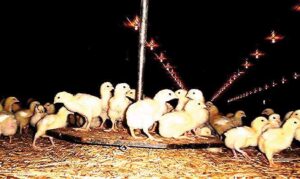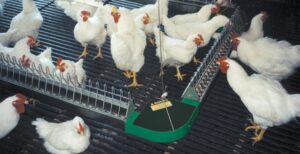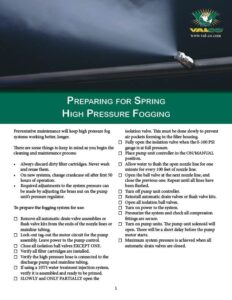Resources
AgSpeak Blog
Explore the AgSpeak Blog for expert agricultural resources.

Preventing Barn Fires
Preventing Barn Fires Barn fires wreak havoc in many ways. In addition to the damage to business and livelihood, barn fires are a great danger to employees, neighbors, and livestock. It is crucial to take steps to prevent, as much as possible, barn fires from occurring. Barn fires can be caused by a variety of…
Read More

E.coli – Symptoms, Prevention, Treatment
Escherichia coli, or E. coli is distributed among poultry of all ages. The Escherichia bacteria is a natural inhabitant of the gut in poultry and most other animals. Normally, it is kept in check by other bacterium in the gut, but if large colonies form it can cause severe discomfort, illness, and mortality. E. coli is…
Read More

Water Consumption vs. Water Usage
Water consumption vs water usage Broiler chickens consume roughly two pounds of water for every pound of food consumed, making water the nutritional backbone of broiler performance. Having palatable, plentiful drinking water is always important, but perhaps even more so during periods of heat stress, when consumption increases to help regulate body temperature. Water consumption…
Read More

ASPECTS OF LIGHT FOR POULTRY PRODUCTION
ASPECTS OF LIGHT FOR POULTRY PRODUCTION: Birds sense light via the eyes and via the pineal gland, and through deep encephalic photoreceptors in the hypothalamus. Therefore, their circadian rhythm is controlled by changes in day length and light intensity. Successful farmers use this to manipulate the environment to maximize productivity. Breeders: Light stimulation is critical…
Read More

Management Minute – Broiler Weight Monitoring
Management Minute - Broiler Weight Monitoring Broiler weight is an important parameter when growing broilers. After all, the end goal of raising broilers is to get as many birds to market as possible, using the least amount of feed, and producing the greatest amount of meat. With pressures on the industry to reduce antibiotic usage,…
Read More

How Proper Humidity Control Helps You Raise Healthy Poultry
How Proper Humidity Control Helps You Raise Healthy Poultry Raising and looking after poultry is a strenuous process that demands patience and dedication, regardless of whether you’re bringing up broilers or not. However, with the help of incubators, we can at least get embryos and hatchlings off to a good start. They have precise environmental…
Read More

Why Humidity is Relative to Flock Management
Why Humidity is “Relative” to flock management Temperature and air quality go hand in hand with humidity, and all three directly result in a healthy flock, egg production and egg quality. However, humidity gets the least attention in the industry. Most, if not all growers, farmers, managers, and helpers directly related or responsible for a…
Read More

Caged VS Cage Free Egg Laying Systems
Caged vs Cage Free Egg Laying Systems The two common types housing used in the egg laying industry are Caged and Cage Free. Up until recently, the most common style in the United States has been the caged system. This system was efficient and a proven method to produced table eggs, but because of public…
Read More

Chain Tension, Feed Depth for Breeder Hens
Chain Tension and Feed Depth for Broiler Breeder Hens Chain feeding has been in use for decades. Typically, they require little maintenance, but can be a problem if the tension of the chain in the loop or the feed volume is not right for the birds and equipment. Chain Tension There is a certain tightness…
Read More



